Diagnostics
Name
Published by
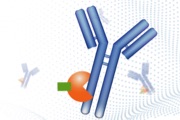
This basic method provides the core methodology for translating a workflow into OneLab-executable script(s) as an attempt to fully or semi-automate a specific procedure. It demonstrates the benefits of automation and highlights OneLab capabilities and best practices to promote solution adoption, helping transition from manual to a more automated approach. It can be used alone or serves as a building block for a more complex workflow and is easily adaptable to users' requirements.
Antibody purification is routinely performed in biopharmaceutical research. Here, we present a rapid automated Protein A-based antibody purification method using magnetic beads. The robust protocol ensures high antibody recovery.
The automation capabilities of the Andrew+ Pipetting Robot allow for the flexibility of processing samples up to 48 samples depending on throughput needs.
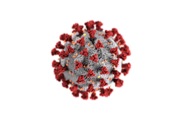
This example method provides a freely adjustable framework for measuring the adaptability of the OneLab environment to workflows from different application fields. It helps to understand various nuances of the code-free, universal protocol designer and provides general indications as to the feasibility of a project. Scripts generally require fine adjustment to correct for variables and support specific labware implementation.
Real-time qPCR is widely used to detect infectious pathogens in human secretions. Preventive, control measures against 2019-nCoV critically depend on the timely and accurate diagnosis of cases.
Automating the reaction preparation of the 2019-nCoV Real-Time RT-PCR Diagnostic Panel will significantly reduce pipetting errors and decreases hands-on time, ensuring more accurate and timely results.
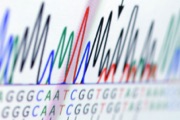
This example method provides a freely adjustable framework for measuring the adaptability of the OneLab environment to workflows from different application fields. It helps to understand various nuances of the code-free, universal protocol designer and provides general indications as to the feasibility of a project. Scripts generally require fine adjustment to correct for variables and support specific labware implementation.
Library preparation aims to build a collection of DNA fragments for next-generation sequencing (NGS). A high-quality DNA library guarantees uniform and consistent genome coverage, thus delivering comprehensive and reliable sequencing data.
OneLab helps you streamline and trace critical steps in your library preparation process to achieve the best possible DNA quality and purity.
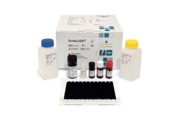
This example method provides a freely adjustable framework for measuring the adaptability of the OneLab environment to workflows from different application fields. It helps to understand various nuances of the code-free, universal protocol designer and provides general indications as to the feasibility of a project. Scripts generally require fine adjustment to correct for variables and support specific labware implementation.
Adequate endotoxin testing is invaluable in ensuring quality and safety. LAL assays require cumbersome sample preparation and are easily disturbed by different constituents of the sample.
EndoLISA, combining solid-phase format and synthetic rFC, achieves sensitive detection of endotoxin by eliminating interfering components. It can be automated, which accelerates the test with minimal human error.
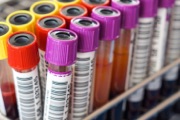
This example method provides a freely adjustable framework for measuring the adaptability of the OneLab environment to workflows from different application fields. It helps to understand various nuances of the code-free, universal protocol designer and provides general indications as to the feasibility of a project. Scripts generally require fine adjustment to correct for variables and support specific labware implementation.
Circulating cell-free DNA derived from diseased cells is a promising biomarker for non-invasive diagnosis and treatment monitoring. Harnessing the potential of ccfDNA involves not only an understanding of its biology and dynamics but also the standardization of isolation methods.
OneLab can act as a platform to execute your ccfDNA isolation protocol, mitigating the effect of pipetting variability.
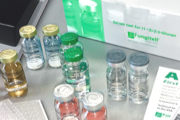
This advanced method offers an end-to-end solution developed around an advanced application, a specialized kit, or an analytical system. It delivers complete functional, ready-to-use protocols that are qualitatively and quantitatively assessed for consistency, executability, and repeatability, usually without needing to make any changes. It operates per batch size and is scalable to accommodate changing requirements.
The Fungitell® chromogenic assay is used to detect (1→3)-β-D-Glucan, a biomarker for invasive fungal disease. The Limulus Amebocyte Lysate (LAL) based assay requires a complex plate building process with numerous sample handling and pipetting steps including standard curve preparation, control testing, in-plate sample pretreatment, and reagent dispensing.
These time consuming and tedious steps can be accomplished using an Andrew+ robot.
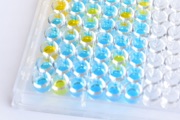
This example method provides a freely adjustable framework for measuring the adaptability of the OneLab environment to workflows from different application fields. It helps to understand various nuances of the code-free, universal protocol designer and provides general indications as to the feasibility of a project. Scripts generally require fine adjustment to correct for variables and support specific labware implementation.
Sandwich ELISA is the most robust and sensitive type of ELISA technique. ELISA protocols traditionally have a complex workflow that requires optimization to obtain accurate results with low analytical error.
To maximize accuracy and reproducibility, OneLab can guide you through your optimized protocol to ensure consistent pipetting throughout the assay and between sample replicates.
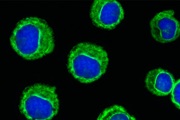
This example method provides a freely adjustable framework for measuring the adaptability of the OneLab environment to workflows from different application fields. It helps to understand various nuances of the code-free, universal protocol designer and provides general indications as to the feasibility of a project. Scripts generally require fine adjustment to correct for variables and support specific labware implementation.
Standardizing cell preparation for flow cytometry analysis is an effective way to ensure optimal permeabilization and staining of cells, thereby resulting in consistent fluorescence intensity and event detection rate.
In line with this objective, OneLab provides valuable resources to guide sample preparation and liquid handling, ensuring the delivery of reproducible results.
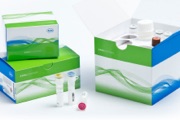
This example method provides a freely adjustable framework for measuring the adaptability of the OneLab environment to workflows from different application fields. It helps to understand various nuances of the code-free, universal protocol designer and provides general indications as to the feasibility of a project. Scripts generally require fine adjustment to correct for variables and support specific labware implementation.
Accurate quantification of Illumina NGS libraries is crucial to obtaining ideal cluster density and equal sample representation in the library pool.
The reliability and reproducibility of qPCR measurements depend on accurate pipetting during sample dilutions and qPCR reaction setup. OneLab helps in minimizing user-related variations in liquid handling by providing full guidance and traceability.

This basic method provides the core methodology for translating a workflow into OneLab-executable script(s) as an attempt to fully or semi-automate a specific procedure. It demonstrates the benefits of automation and highlights OneLab capabilities and best practices to promote solution adoption, helping transition from manual to a more automated approach. It can be used alone or serves as a building block for a more complex workflow and is easily adaptable to users' requirements.
Isolation of nucleic acids from various sample materials is the basis for a large variety of downstream analysis in the field of research, applied science, and diagnostics.
MACHEREY-NAGEL provides a diverse set of optimized solutions for nucleic acid isolation including genomic DNA isolation from human specimens, such as whole blood, serum, plasma, or other body fluids.
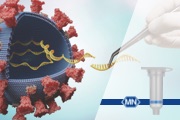
This basic method provides the core methodology for translating a workflow into OneLab-executable script(s) as an attempt to fully or semi-automate a specific procedure. It demonstrates the benefits of automation and highlights OneLab capabilities and best practices to promote solution adoption, helping transition from manual to a more automated approach. It can be used alone or serves as a building block for a more complex workflow and is easily adaptable to users' requirements.
Isolation of nucleic acids from various sample materials is the basis for a large variety of downstream analysis in the field of research, applied science, and diagnostics.
MACHEREY-NAGEL provides a diverse set of optimized solutions for nucleic acid isolation including viral RNA and DNA isolation from human specimens, such as swabs or viral transport media.
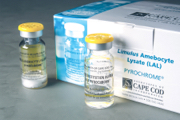
This advanced method offers an end-to-end solution developed around an advanced application, a specialized kit, or an analytical system. It delivers complete functional, ready-to-use protocols that are qualitatively and quantitatively assessed for consistency, executability, and repeatability, usually without needing to make any changes. It operates per batch size and is scalable to accommodate changing requirements.
Endotoxin testing is a requirement for any injectable drug or medical device to ensure safety. Pyrochrome® is a 96 well microplate based chromogenic Limulus Amebocyte Lysate (LAL) assay that requires a complex plate building process with numerous pipetting steps.
Standard curve and positive product control (PPC) preparation, sample arraying, and reagent dispensing are time consuming and tedious steps that can be accomplished using an Andrew+ robot.
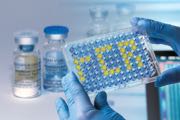
PyroSmart NextGen® Recombinant Cascade Reagent (rCR) for Endotoxin Detection
Associates of Cape Cod, Inc.
This advanced method offers an end-to-end solution developed around an advanced application, a specialized kit, or an analytical system. It delivers complete functional, ready-to-use protocols that are qualitatively and quantitatively assessed for consistency, executability, and repeatability, usually without needing to make any changes. It operates per batch size and is scalable to accommodate changing requirements.
Endotoxin testing is a requirement for any injectable drug or medical device to ensure safety. PyroSmart NextGen® is a 96 well microplate based chromogenic that utilizes recombinant proteins as key inputs.
The assay requires a complex plate-building process with numerous pipetting steps. Standard curve and positive product control (PPC) preparation, sample arraying, and reagent dispensing are time-consuming and tedious steps that can be accomplished using an Andrew+ robot.
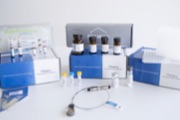
This advanced method offers an end-to-end solution developed around an advanced application, a specialized kit, or an analytical system. It delivers complete functional, ready-to-use protocols that are qualitatively and quantitatively assessed for consistency, executability, and repeatability, usually without needing to make any changes. It operates per batch size and is scalable to accommodate changing requirements.
Peptide analysis can be a demanding process especially with the increased need for a greater understanding of SARS-CoV-2 infection.
Waters SARS-CoV-2 LC-MS kit enables precise and reproducible preparation of three SARS-CoV-2 peptides from the NCAP protein using the Andrew+ pipetting robot.
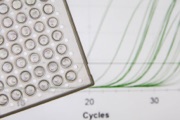
This example method provides a freely adjustable framework for measuring the adaptability of the OneLab environment to workflows from different application fields. It helps to understand various nuances of the code-free, universal protocol designer and provides general indications as to the feasibility of a project. Scripts generally require fine adjustment to correct for variables and support specific labware implementation.
Quantitative RT-PCR is a powerful tool to investigate gene expression. However, several challenges are encountered by scientists during sample preparation, including pipetting errors and DNA contamination.
OneLab addresses these issues by providing step-by-step guidance for pipetting and traceability, so as to mitigate unnecessary waste of reagents and improved data reproducibility.

This example method provides a freely adjustable framework for measuring the adaptability of the OneLab environment to workflows from different application fields. It helps to understand various nuances of the code-free, universal protocol designer and provides general indications as to the feasibility of a project. Scripts generally require fine adjustment to correct for variables and support specific labware implementation.
The manufacturing of therapeutic IgG antibodies is a complex process that requires precise monitoring. A major issue to address in relation to IgG measurement is reproducibility.
The Valita®Titer assay combined with Andrew Alliance’s automation and OneLab software provides a standardized and traceable solution for fast and accurate IgG quantitation, thus mitigating the effect of user variability.
